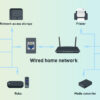Lifestyle
Protecting from spyware

Network security helps protect your workstations from harmful spyware. Malware may appear as a little green app icon in your taskbar or at the bottom of your desktop, prompting you to install a temporary app from a trustworthy source. The installation can fail for many legitimate programs because of flawed downloads or websites with pirated software.
In many cases, your employer’s security teams will be the best source of help with choosing the best security software for your workstation, but it is always a good idea to keep an eye on your security software purchases, and that’s why using the security operation software from this page could be essential to protecting your site and businesses . Get security by following security best practices.
Where should I look for security software?
Just about every major computer manufacturer offers a number of software security programs that may help reduce your risk of malware, spyware, and other security threats. You can check for the latest versions of these software programs on software support websites and software bulletin boards. As always, the best way to stay safe is to use appropriate cybersecurity practices.
Do I need to remove the spyware?
In general, it is not recommended that you remove a spyware program because, for the most part, the spyware should be removed when you are not using the computer. Some programs will leave traces on your computer that will allow you to identify them. If you decide to do so, it is a good idea to remove the spyware when you no longer use the computer and when it is no longer needed to be present.
What software do I use?
You need only one program in your computer’s security suite. The two most common types of software used in computer security are anti-virus and anti-malware programs.
Some anti-virus programs allow you to scan your computer for possible threats. While this is a valuable tool, most people do not realize that you can enable other functions, such as scanning all the files in your folder, and changing the desktop wallpaper, just by opening the program’s configuration window.
Some anti-malware programs allow you to scan your computer for viruses, worms, and other threats. However, these programs can also be used to spy on you, alert you when something unusual is going on on your computer, or simply fool you into thinking you are infected when you are not.
It is best to download your antivirus program and then disable any other security programs and anti-virus programs that are not being used on the computer.
Anti-virus programs are usually installed by your Windows operating system at some point during your computer’s installation. If you are unsure, you can look at the product information on a company’s website to determine which type of antivirus program was used to install it.
Anti-malware programs usually are located in a program’s configuration window. Anti-malware programs monitor your computer for possible malware infections, and then attempt to identify and remove any suspected threats.
Do not allow a computer program to scan your computer for threats that are not on your computer. Although some people want their computer protected from malware, and some people install antivirus programs to detect and delete suspected malware, you can be as thorough as you like in determining the risks in your workstation. You can even use a third-party security software that you installed yourself to scan your workstation for threats.


















